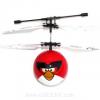- 4 replies
- 1,677 views
- Add Reply
- 1 reply
- 2,551 views
- Add Reply
- 3 replies
- 1,643 views
- Add Reply
- 1 reply
- 6,534 views
- Add Reply
Google Timelapse (Landsat imagery)

By intertronic,
Hello everyone,
just wanted to share a news about a new tool of google : Timelapse
Here a video of Las Vegas:
and of Aral Sea
and a new city built in China
Highlight Playlist
https://www.youtube.com/playlist?list=PLWw80tqUZ5J_T8EKLKEWYd_NcFPiq9zTN
Summary and interactive
https://earthengine.google.com/timelapse/
Timelapse is a global, zoomable video that lets you see how the Earth has changed over the past 32 years. It is made from 33 cloud-fre
Open Earth observation data now more accessible

By Lurker,
At the Thirteenth GEO Plenary Meeting, held in St Petersburg, Russian Federation from 9-10 November, 2016, representatives from GEO’s 103 Member governments and 106 Participating Organizations (POs) convened to launch a new look for the Global Earth Observation System of Systems (GEOSS) Portal. Participants also addressed how best to advance GEO Initiatives linked to the Sustainable Development Goals (SDGs) and for the first time, to engage with the commercial sector through a Plenary panel sess
New GNSS weather data from TechDemoSat-1

By Lurker,
New weather datasets, which could prove highly valuable for weather forecasting and for longer term climate monitoring, have just been made available from the Space GNSS Receiver-Remote Sensing Instrument (SGR-ReSI) instrument on board TechDemoSat-1, a small technology demonstration satellite launched by Surrey Satellite Technology Ltd (SSTL) in 2014.
With support from the European Space Agency, SSTL and the National Oceanography Centre (NOC) are continuing to work on the data received from
Indian coordinate to WGS84
Introducing OSMLanduse.org

By Lurker,


a new global WebMap prototype “OSMLanduse.org” has been launched by GIScience Research Group Heidelberg. The map provides worldwide Landuse/Landcover informationon the basis of OpenStreetMap (OSM) data. This is based on our earlier work on testing the suitability of OpenStreetMap for deriving landuse and landcover information (LULC). LULC data is highly relevant for many research questions and practical planning activites. Up to now there exist well known data sets generated from remote sensing
-
Forum Statistics
8.7k
Total Topics43.4k
Total Posts



